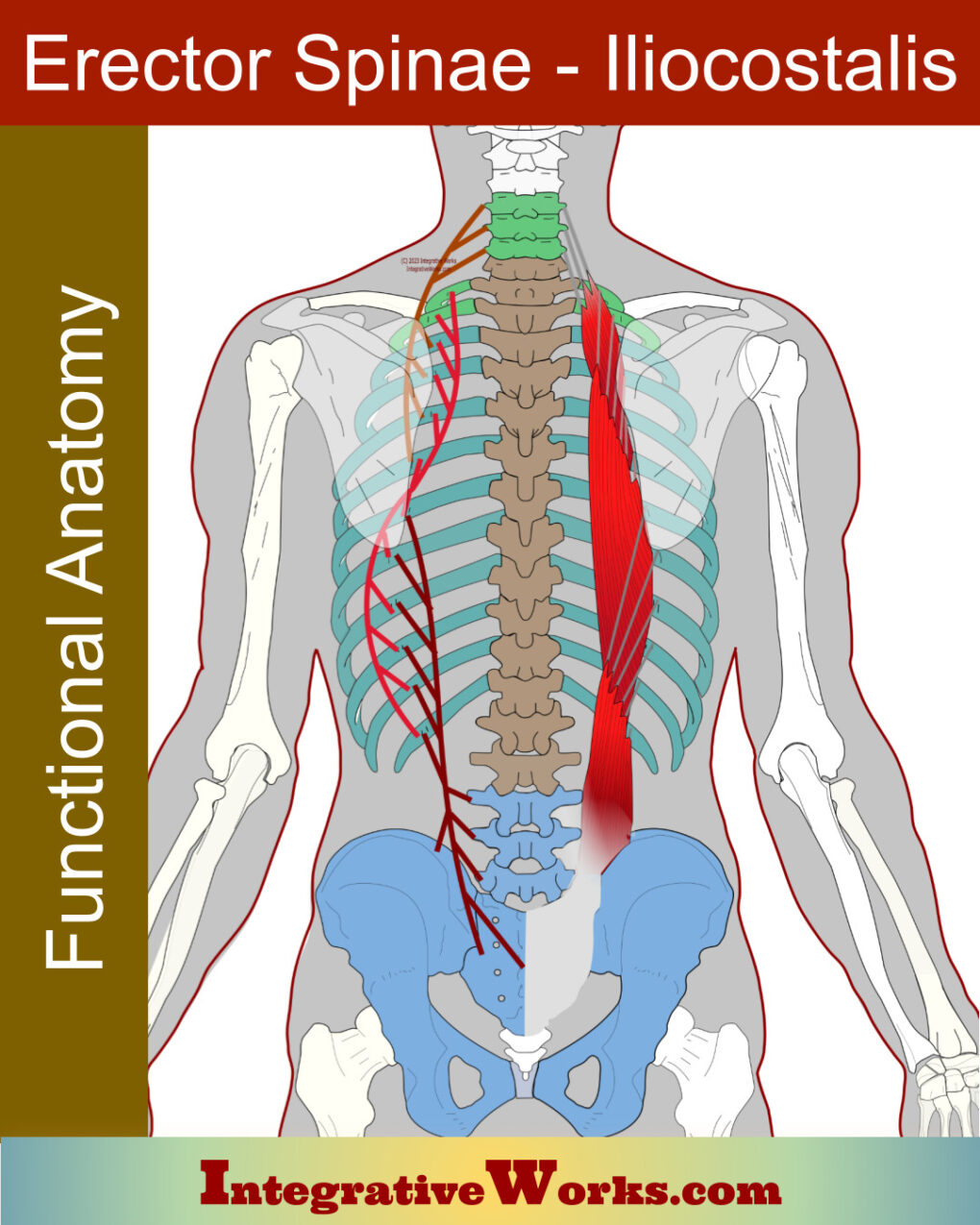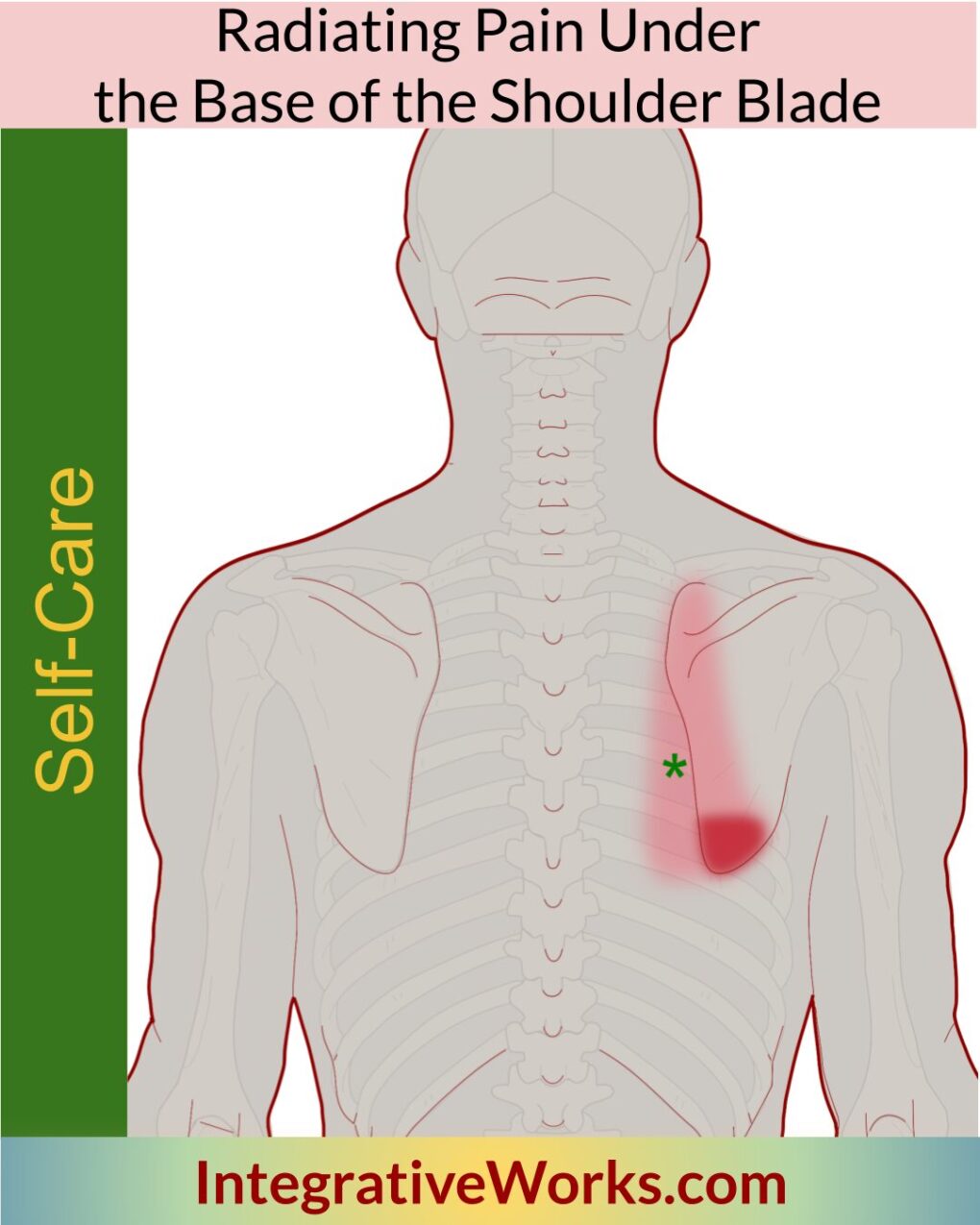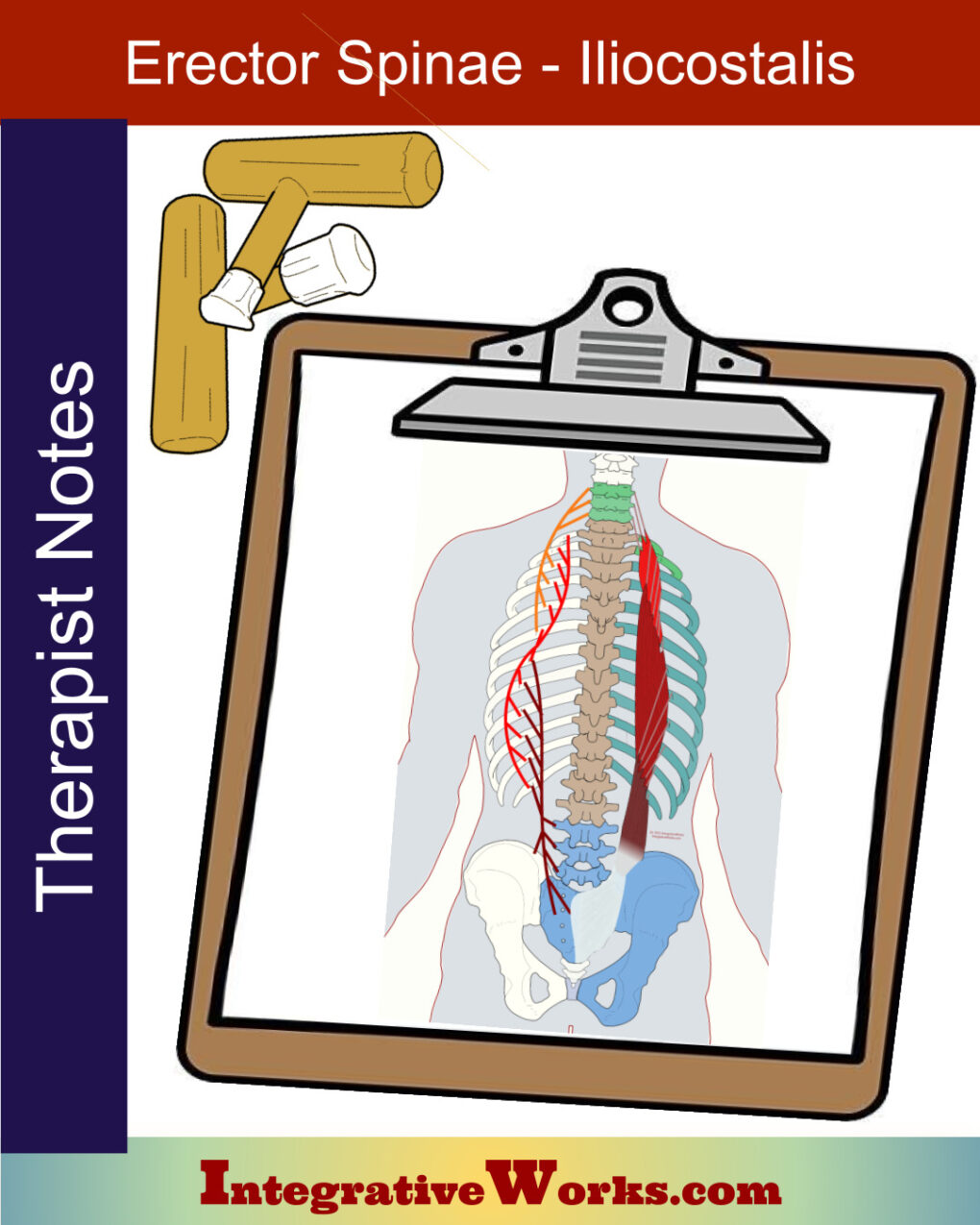Table of Contents
- How People Describe This Pain Pattern
- How You Activate and Intensify This Pain Pattern
- Self-Care – Getting Relief on Your Own
- Musculoskeletal Anatomy Behind Your Pain
- Therapy Notes for Massage and Bodywork
How People Describe This Pain Pattern

Primary Complaint
People complain that radiating pain under the bottom of the shoulder blade is either acute or chronic.
- Acute cases complain of sharp pain that jabs at them and radiates up and toward the spine. Consequently, It makes them stiff and aggravated because the wrong move creates pain. Once it is aggravated, it can radiate, even when they are still.
- Chronic cases have a low level ache and occasionally move in a way that aggravates the trigger point. In addition, sudden or extreme movements that twist and extend the spine can be very sharp. Long periods of bening forward create a dull, aching pain.

Can Feel Like Heart Problems
The more irritated trigger point creates a fuller pattern. It radiates up between the shoulders and through to the front. Naturally, this pain pattern can be concerning, especially for clients with heart conditions.
Pain through the chest is indicative of a heart condition. See your doctor before seeking relief from bodywork.
I see many of these cases and always have a frank conversation about cardiac care. I always refer them to a doctor for examination.
How You Activate and Intensify This Pain Pattern
Twist and Shout
This trigger point activates with persistent or sudden twisting. Usually, this combines with extending the trunk and head up and back. Activities like painting and soffit work are perfect for creating this problem. Furthermore, jerking activities like roller coasters, car accidents, and slipping on the ice also stress the spinal erectors.
Perpetuating the Problem
Once the trigger point is activated, bending forward for a while makes it worse. Activities might include washing dishes, kneading dough, working on cars, or planting flowers. Of course, slumping over the laptop is a problem. Also, sudden jerks that take the head up or twist the torso irritate this muscle. Clients have complained about long car rides with their heads pulled forward, “sleeping wrong,” or new exercise routines.
The Musculoskeletal Anatomy Behind Your Pain
Musculoskeletal Anatomy
This post on anatomy contains standard information about the origin, insertion, function, and innervation of muscles. Additionally, it includes information on functional considerations and anomalies.
Find Related Posts
Anatomy posts have a grid of all related posts. This includes posts on pain patterns, self-care, therapy notes, NMT protocols, cranial techniques, and cases.
Getting Relief on Your Own
Clinically Proven
Self-Care Strategies
This post offers strategies for self-relief. Explore how to change your activities, stretch, ice, and more to relieve the pain associated with this trigger point.
Therapy Notes for Massage and Bodywork
Better Bodywork
Through Shared Expertise
This post has techniques, tips, treatment routines, and anatomy illustrations to improve the bodyworker’s approach.
Support Integrative Works to
stay independent
and produce great content.
You can subscribe to our community on Patreon. You will get links to free content and access to exclusive content not seen on this site. In addition, we will be posting anatomy illustrations, treatment notes, and sections from our manuals not found on this site. Thank you so much for being so supportive.
Cranio Cradle Cup
This mug has classic, colorful illustrations of the craniosacral system and vault hold #3. It makes a great gift and conversation piece.
Tony Preston has a practice in Atlanta, Georgia, where he sees clients. He has written materials and instructed classes since the mid-90s. This includes anatomy, trigger points, cranial, and neuromuscular.
Question? Comment? Typo?
integrativeworks@gmail.com
Interested in a session with Tony?
Call 404-226-1363
Follow us on Instagram

*This site is undergoing significant changes. We are reformatting and expanding the posts to make them easier to read. The result will also be more accessible and include more patterns with better self-care. Meanwhile, there may be formatting, content presentation, and readability inconsistencies. Until we get older posts updated, please excuse our mess.





